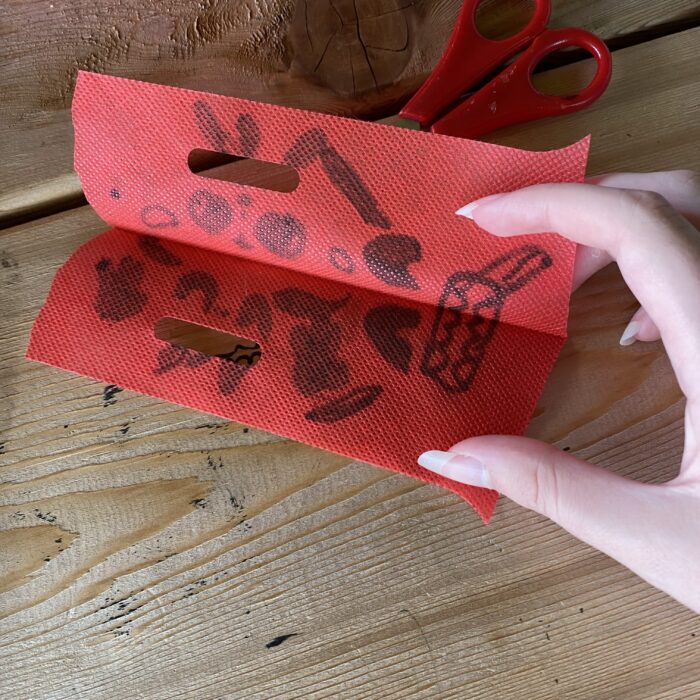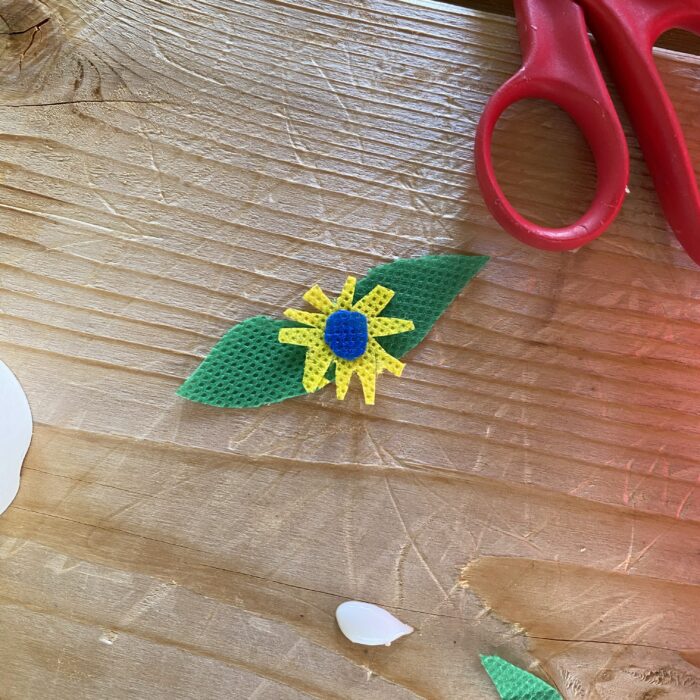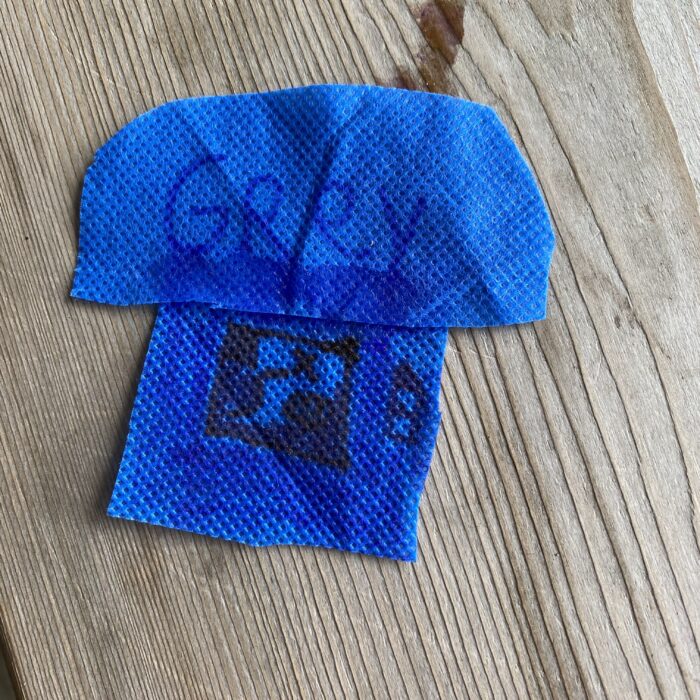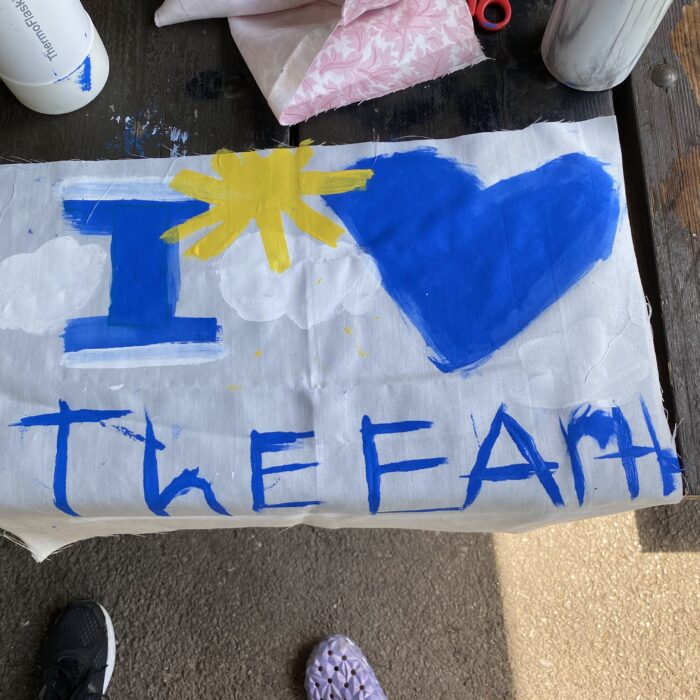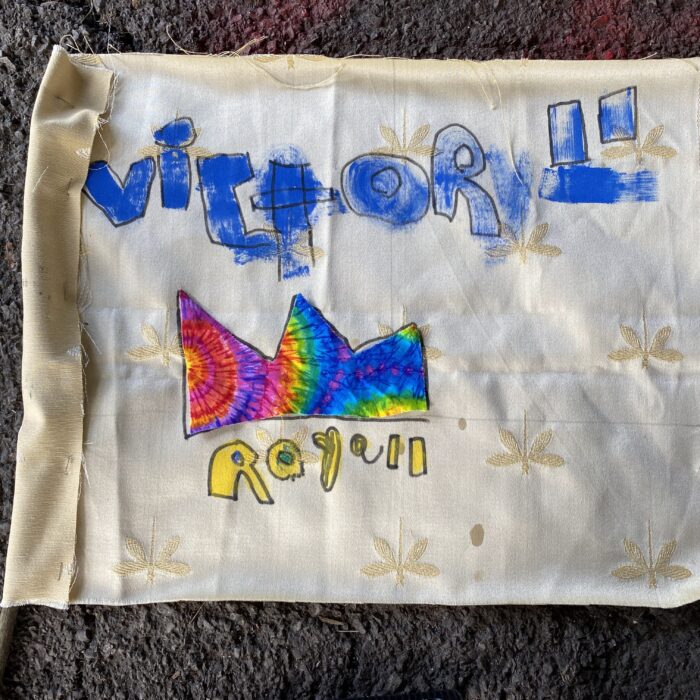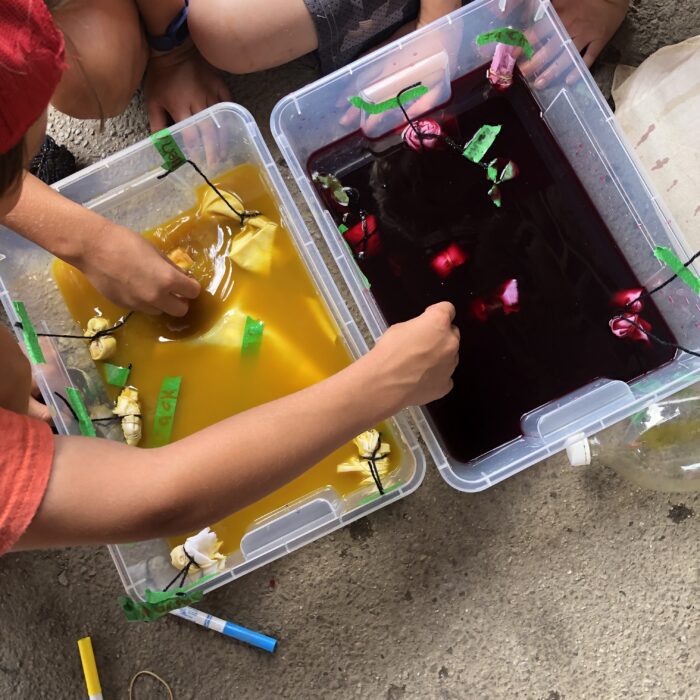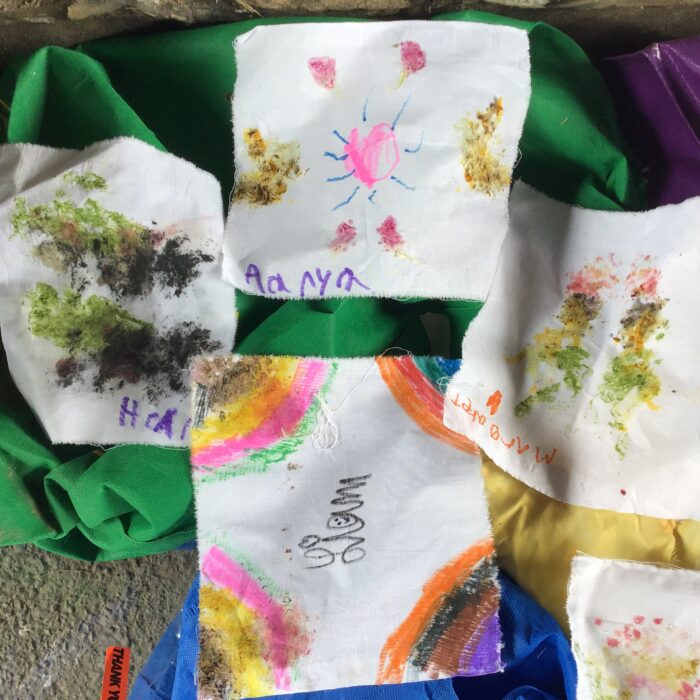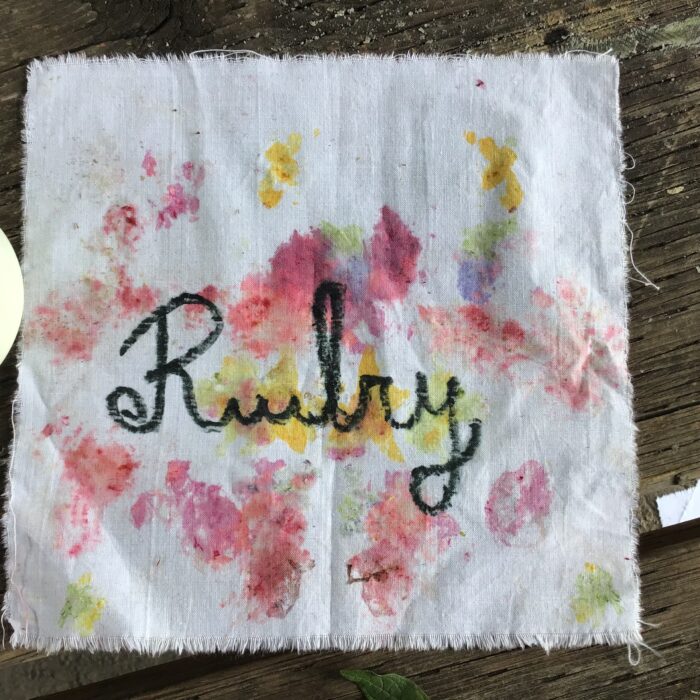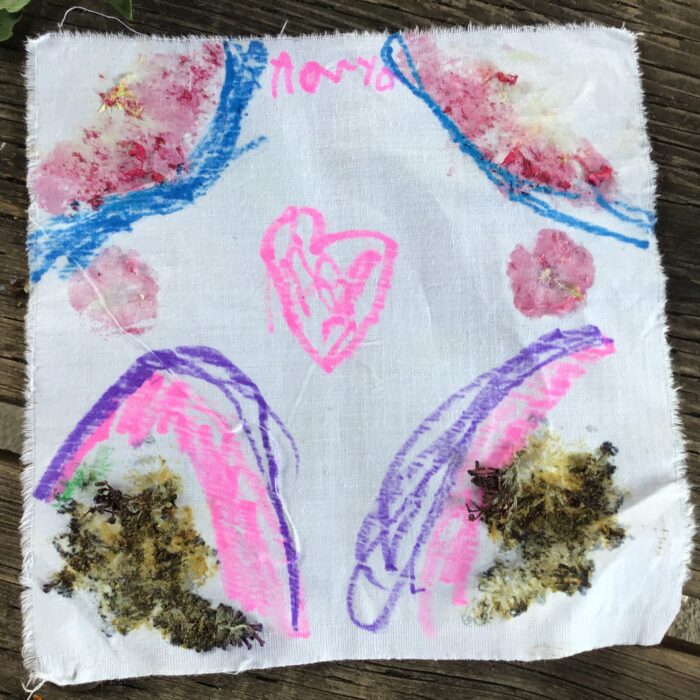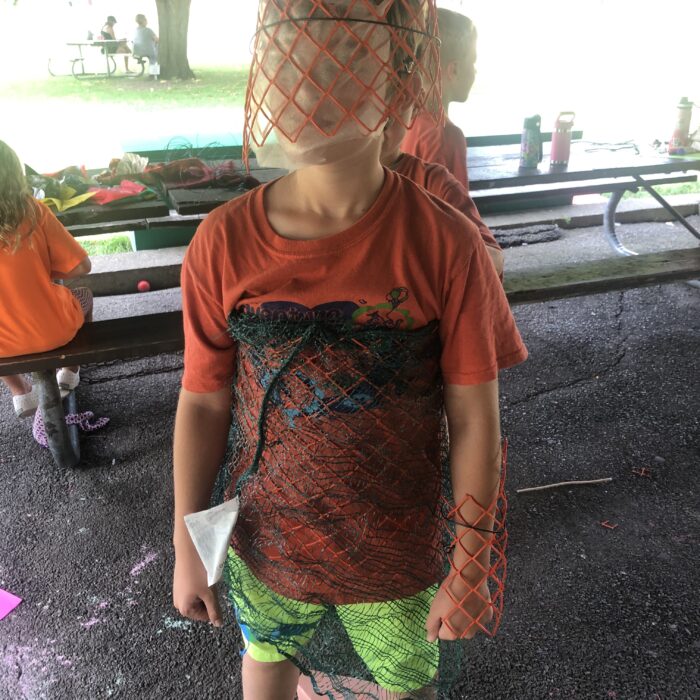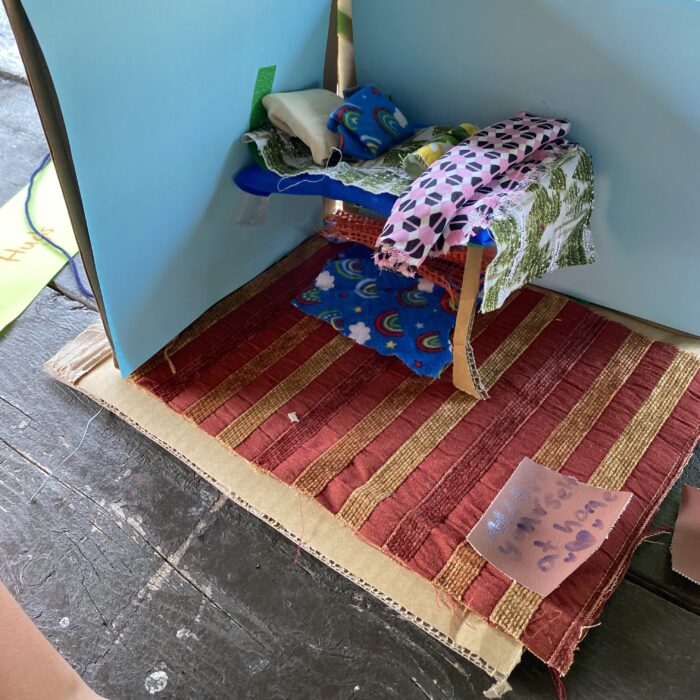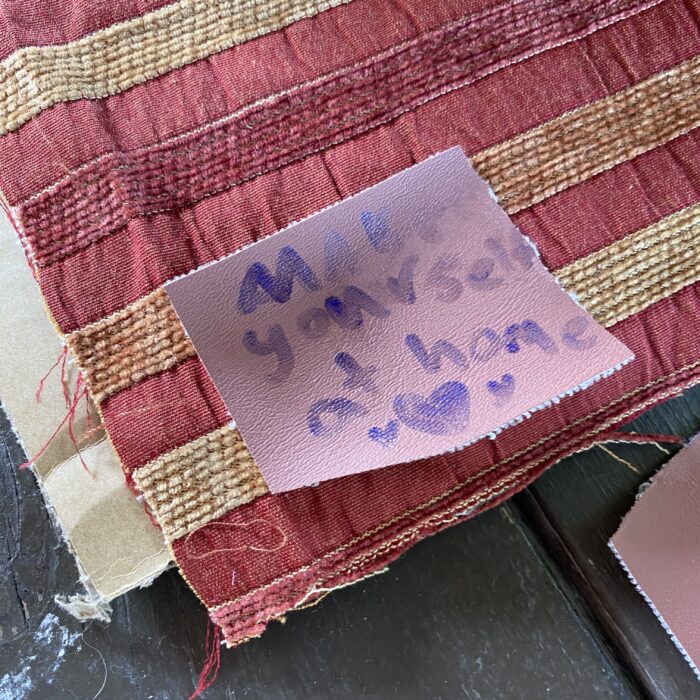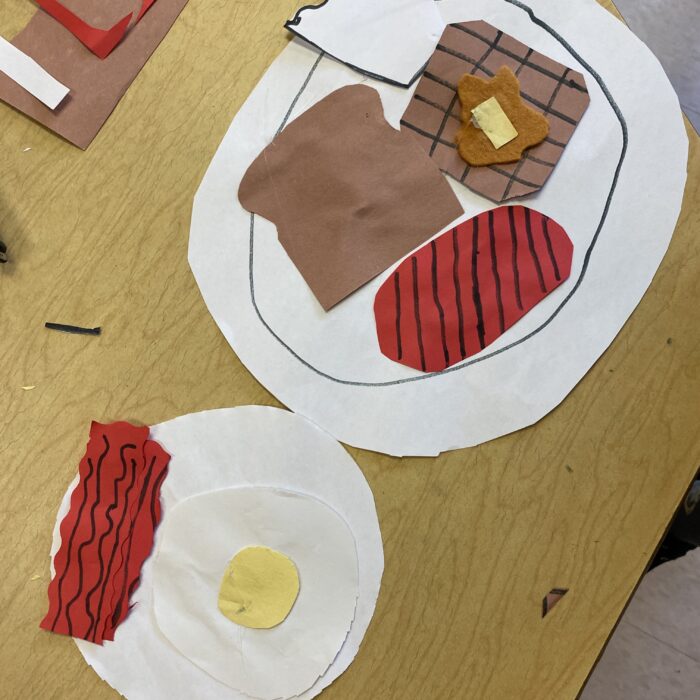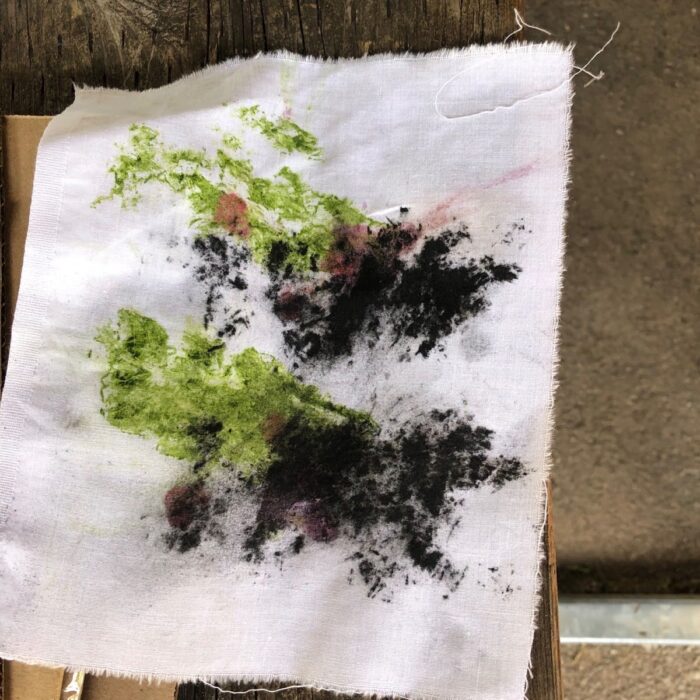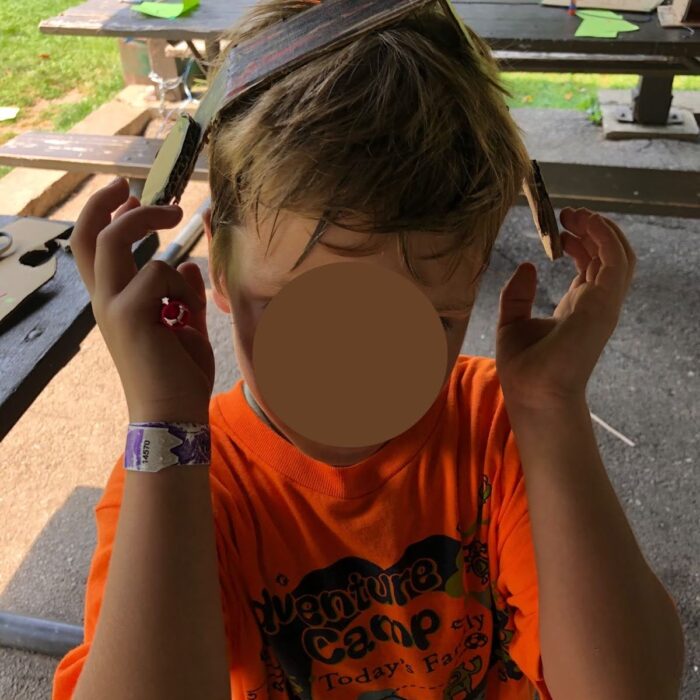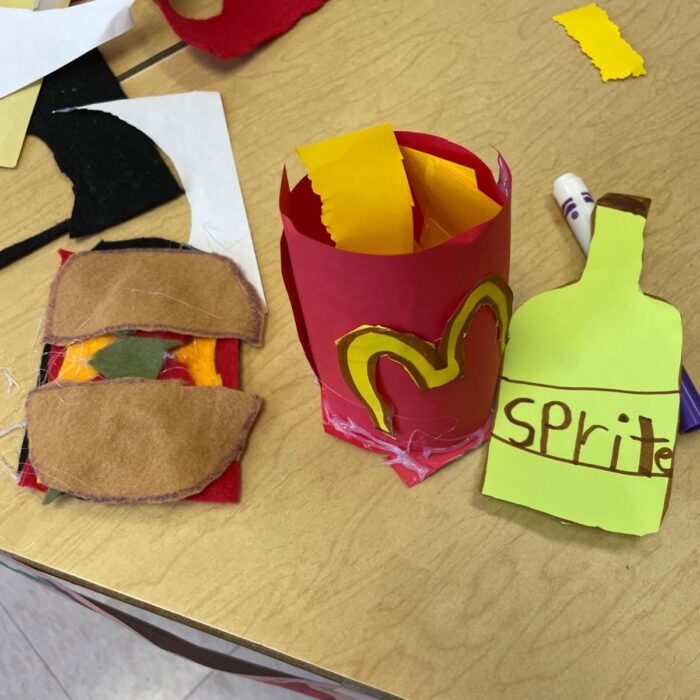Artasia at St. Augustine's
Today's Family Early Learning and Child Care
🖌️ Artist Educators: Sophie Zuccolo, Caroline Edgar
Crafting our Stories
Participants explored their identities by creating personalized badges out of upcycled fabric and markers that represent them, their identity and their culture. Through these creations, participants expressed what brings them joy, what is important to them, and what makes them unique. Each art piece became a tangible expression of their individuality and heritage.
Many of the participants share a passion for video games, so a common theme among the badge designs was game controllers. There were variations in the button layouts depending on what type of controller they chose to replicate, like Xbox or Nintendo Switch. There were also badges based on football, hockey, and rainbows. The kids at this site over the course of my time with them made me realize that every child can find a passion for art, you just need to find what they’re interested in.
One artist used a handle of a red grocery bag to make a book about a little face eating a lollipop, but then he realizes it’s just his tongue. Another artist wanted to make a 3D badge of a rose, but since we were outside with no access to hot glue she went through several design iterations to compensate. The final design she settled on was a flat yellow flower with a blue centre. One of the badges depicts a map in Minecraft. The artist explained to me that his favourite parts of the game are building and exploring, so he likes to make maps to explore the environment and look at the buildings he’s created from a bird’s eye view.
When We March
Participants worked in small groups to create vibrant banners and flags out of upcycled fabric that expressed their shared values and messages, gluing pieces together and adding words and designs with paint and markers. We invited participants to reflect on the question: “What matters to you?”. We attached them to sticks from outside so they could be waved around like flags, and the kids really enjoyed this element. For the most part, the banners fell into two common themes: food and video games. The food banners featured Starbucks, pop, tacos, pizza, salad, and strawberries. One artist chose to create a piece with a message about the environment, inspired by our use of scrap fabric that would otherwise go to waste. They wrote “I 💙 the Earth”, with an illustration of the Sun. This symbol and the blue colour scheme are fitting, as our planet’s abundance of water and the Sun we orbit are what make it so unique and good at sustaining life.
One banner was a team project and says “Victory Royale”, a reference to the game Fortnite. The artists utilized all three mediums: paint, markers, and gluing on scrap fabric. They even came up with an incredibly creative idea, using the yarn meant for hanging the flags to wrap the base of the stick and create a special and more comfortable handle.
Another artist was shy and preferred alone time to focus on his work. The end product turned out great, with the drawings being very good for his age. He depicts several scenes from the game Among Us, including an imposter with his tongue out about to attack an unsuspecting orange crew mate, a player wearing a flower hat, and a vent. He tried to draw the Facebook logo too (the black rectangle with the blue F).
Connection with Land and Environment
Participants created botanical prints on squares of fabric with flower pounding and natural tie dye. We collected some of the artists’ pieces this week to combine into a large picnic blanket for our exhibition at Supercrawl. This week’s activities emphasize the beauty of nature and the importance of shared spaces for communities to gather and celebrate togetherness. I gathered the plants we used from natural spaces around Dundas, which included sumac, dandelions, black eyed Susans, purple coneflowers, yellow toadflax, red maple leaves, birds foot trefoil, purple crown vetch, butterfly bush, Japanese maple leaves, and African daisies.
The kids LOVED this activity, especially the tie dye. They were all gathered around the containers the entire time, and some of them made three or four pieces each. Once they were in the dye, they sat next to it and watched and experimented with dying other things like cardboard and leaves. Some of them got pretty fancy with their wrapping techniques and using multiple colours of dye. The flower pounding was still popular too though, with many campers choosing to embellish their prints with markers. They even brought some of their own flowers to use. One piece has a lovely red, pink and yellow colour scheme. The artist is very skilled at writing their name in cursive. Another artist went with a quadrant-style design, placing the flowers in the corners of their piece and finishing it off with arches and a central heart.
Wearable Designs & Sustainability
Participants upcycled scrap materials to create unique, expressive pieces of wearable art. These pieces showcased their individuality, creativity, and self-expression. They reflected on how their clothing choices express their personal style and identity, the importance of sustainability, and how they can creatively repurpose materials to make something new.
We started off the activity by talking about the importance of upcycling and reusing materials, and the kids made a lot of smart points about protecting the environment. One girl gave a very detailed explanation about garbage ending up in the ocean and how some sea creatures can mistake plastic waste as animals and eat it. They were excited to get started and made a variety of wearable pieces like bracelets, shields, paper beads, and bows. They also made other crafts including pretend computers, kites and dioramas of buildings. The plastic fencing was used to make armor by several kids, the first of my sites to latch on to that material. They really enjoyed the freedom this activity provided, and I was glad they didn’t get overwhelmed.
One set of armor featuring a helmet, a chestpiece, and a gauntlet. The chestpiece has an outer layer of mesh from a produce bag, and the helmet has a layer of translucent fabric inside to conceal the appearance of the wearer. One artist chose to make headphones out of cardboard for their wearable art, and created a matching monitor, keyboard, and mouse to go with them. Another chose to make dioramas that were made using cardboard and various scrap fabrics. It features a carpet, blue walls, a loft bed with a variety of blankets and pillows, and a doormat that says “Make yourself at home”.
A Feast of Stories
Participants made pretend food items out of felt and craft paper, creating recipes both real and imaginary that reflect the diverse cultures and experiences within our community. We pondered the cultural and social significance of food as a means of connection and celebration, and as a group discussed our favourite dishes, the role of food in our lives and communities, and celebrated the power of shared meals and the stories they tell. We also explored different kinds of “recipes” beyond food, asking participants to think creatively about what constitutes a recipe for happiness, love, and other elements of a thriving community.
The kids were excited to begin! They told me about their favourite foods and different unique foods they have at their homes, and then they started grabbing their materials. They really enjoyed this activity and made a ton of different foods, including carrots, doughnuts, ice cream, popcorn, burgers, waffles, bacon, fries, popsicles, candy canes, shrimp, toast, eggs, milk, pizza, and cupcakes. The most unique one was laxative tea. Several Minecraft foods were made as well, like raw steak. Some kids wrote recipes, and we learned about spelling certain words, like “Purple” and “Pattern”.
A group of kids made a bunch of McDonalds menu items including a burger, a bottle of Sprite, three separate containers of fries, and a ketchup packet. They made use of their classroom’s wavy stickers to cut out the fries, and made the burger out of felt and hot glue. They set up a drive thru and started playing as a pretend store in the corner.
One boy made a very complicated breakfast with several different foods and plates, which included eggs, bacon, steak, toast, a glass of milk, and a waffle with syrup and butter. The boy making the breakfast told me he wasn’t very good at arts and crafts, but I encouraged him and he ended up being very proud of what he made.
The Power of Prompts
A big stumbling block for artists when it comes to creativity, at least later on in adulthood, is the struggle to get started and come up with ideas. This is why we use prompts in our Artasia program: to help children get started on an art project and spark their creativity. Of course, there are times when children don’t want to participate or they want to work on their own project instead. We always encourage this because we use prompts as a tool to aid children’s creativity, not restrict it, so of course they are always welcome to do their own thing if they wish.
The children at St. Augustine’s were generally very eager to follow along with our prompts. However, I noticed throughout the various weeks of Artasia that their creativity expanded beyond our prompts and led to exploration and play. Week 3 of our programming, we made Tie Dye and Flower Pressed fabric squares. The theme of natural ingredients inspired a few kids to experiment with different materials. One boy found some charcoal at the park and pounded that onto the fabric square. Another decided to test out if a leaf would soak in our natural dye (it didn’t). In Week 4 of Artasia, we made Wearable Art out of upcycled materials. One of the kids decided to make headphones to wear out of cardboard, which led to an entire (and epic) cardboard gaming setup!
The most significant moment I witnessed was in Week 5 during our Recipe prompt. Many of the kids worked together to make some of their favourite foods out of paper, fabric and felt. One of the kids made a burger, which evolved into a McDonald’s cheeseburger combo with Sprite and medium fries (very creative!), which then inspired the kids to roleplay a McDonald’s drive-thru with the art they had all just made! It’s so important to provide kids with opportunities to explore and expand their creativity. By providing these Artasia programs, we were able to use art to strengthen the imagination of children in our community.
